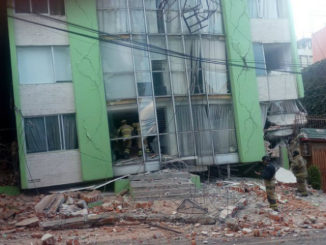
SANTIAGO – The TPP11, as the Trans-Pacific Partnership Agreement is known after the departure of the United States, will be signed in Santiago de Chile on March 8.
11 of the 12 countries that initially negotiated the agreement, decided to move forward after a year of talks successfully concluded in Tokyo on Jan 23.
Until then there had been talk of “the first week of March” as the eventual date for the signing of the Treaty, which means that it will be before the President of Chile, Michelle Bachelet, handed over the job to Sebastián Piñera on March 11.
Chile organised a meeting in February 2017 after U.S. President Donald Trump marked the exit of his country from the agreement. It was so that in Vina del Mar it was born what is now known as the TPP-11.
In fact, the Summit of the Asia-Pacific Economic Cooperation (APEC) Forum in Da Nang, Vietnam, last November, should have been the moment when the agreement among the 11 countries took place, but Canada put some objections and delayed the new step.
The Chilean Ministry of Foreign Affairs has indicated that on the morning of March 8, at a downtown hotel in the Chilean capital, will take place the protocolary ceremony to sign the Comprehensive and Progressive Treaty of Trans-Pacific Partnership-CPTPP.
11 countries including Chile move forward on TPP without U.S.
The TPP was intended to cover 40% of global GDP and was originally signed in February 2016 by Australia, Brunei, Canada, Chile, Japan, Malaysia, Mexico, New Zealand, Peru, Singapore, Vietnam and the United States. The agreement, which was negotiated for more than six years, had to be ratified in a period of two years by at least six member countries whose combined GDP represented 85% of the total, so after the departure of the US. , which alone brings together 60% of the GDP of the 12 signatory states, was invalidated in its current format.
The agreement without the United States, the TPP11, as has been pointed out by the Chilean Foreign Ministry, preserves the original content of the original treaty, including all the elements of access to markets and their related disciplines and the only agreed adjustment is the list of suspended or non-applicable provisions among the 11 countries, list that was published in Vietnam with the Declaration of Ministers, in the framework of the APEC Leaders Summit last November.
For TPP11 to enter into force, it must be ratified by half plus one of the member countries, that is, six.



